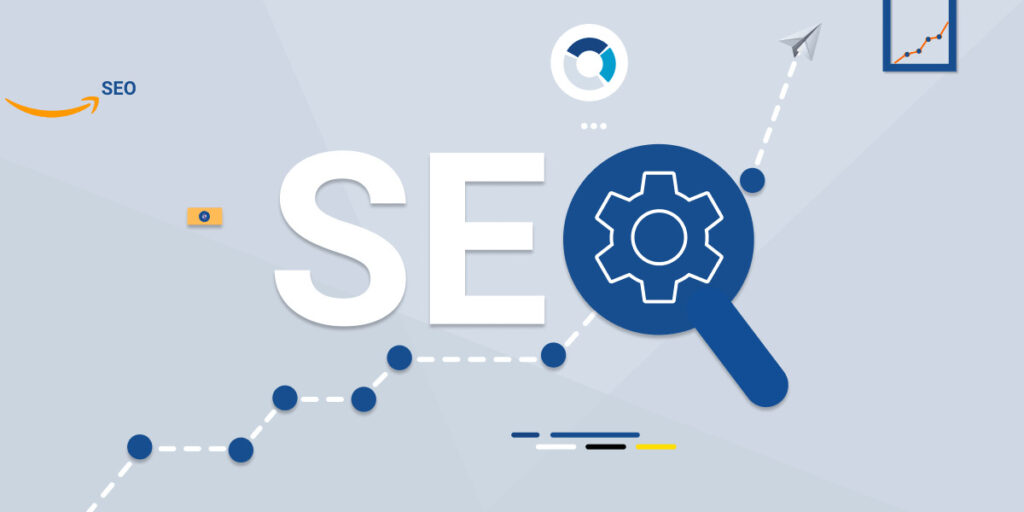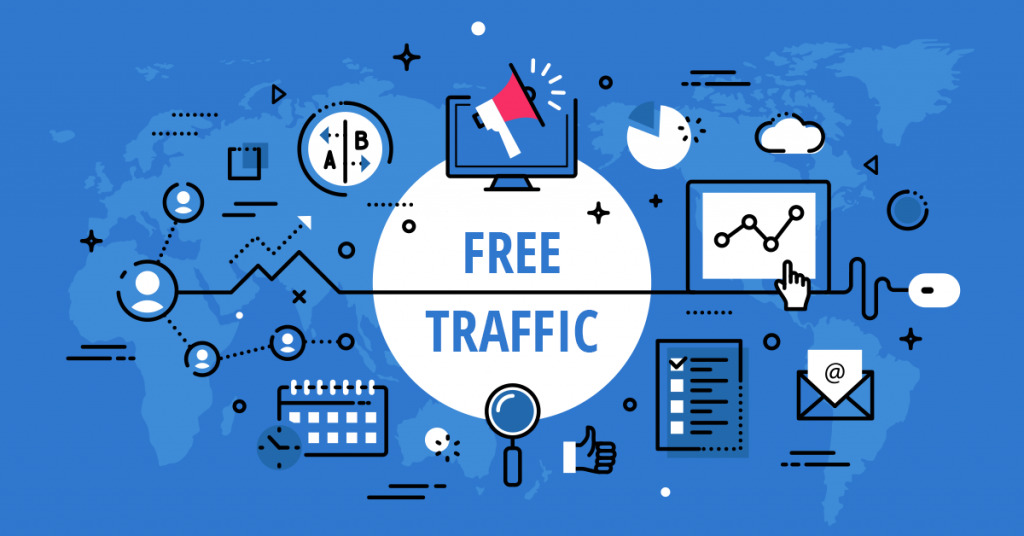Blog
SEO Basics: A Beginner’s Guide
In this guide, we will cover everything from SEO fundamentals to on-page and off-page optimization, as well as content marketing, link building, and technical SEO. By the end of this guide, you’ll have a strong understanding of SEO basics and be ready to implement effective strategies to achieve great results in today’s ever-changing SEO landscape.

Key Takeaways:
- SEO is essential for improving your website’s visibility in search engine results.
- Keyword research plays a crucial role in identifying the terms and phrases your target audience is searching for.
- On-page optimization involves optimizing elements on your website’s pages to improve visibility and ranking.
- Off-page SEO strategies focus on activities outside of your website to build backlinks and enhance your online reputation.
- Content marketing and link building are integral parts of SEO, helping to attract and engage your target audience.
What are the SEO basics & Why is it important?
SEO, or search engine optimization, is the process of improving a website’s performance, visibility, and authority so that it can rank higher in organic search results. By implementing search engine optimization basics and techniques, businesses can enhance their website’s visibility, attract relevant traffic, and achieve commercial success.
SEO plays a crucial role in digital marketing, as it allows businesses to optimize their online presence and connect with their target audience effectively. The importance of SEO lies in its ability to increase website visibility and organic search visibility, leading to improved brand awareness, website traffic, and ultimately, revenue.
When users search for products or services online, they usually have a specific intent, whether it’s to make a purchase, find information, or seek a solution to a problem. By leveraging SEO marketing, businesses can align their website with this commercial intent, ensuring that their offerings are visible to potential customers actively looking for them.
One of the key benefits of SEO is its ability to drive relevant traffic to a website. SEO helps businesses reach their target audience by optimizing their website with high-quality content that aligns with users’ search queries. This ensures that the traffic generated through SEO efforts is not only increased but also relevant, increasing the chances of conversions and customer engagement.
Creating high-quality content is at the core of successful SEO best practices. It involves producing relevant, informative, and engaging content that not only resonates with the target audience but also addresses their needs and pain points. Such content positions businesses as industry experts, builds credibility and trust, and ultimately drives conversions.
In addition to quality content, SEO also focuses on building high-quality backlinks. Backlinks are links from other websites that point back to a business’s website. These backlinks act as votes of credibility and authority, signaling to search engines that the website is trustworthy and deserving of a higher ranking in search results. Quality backlinks from reputable websites are essential ranking factors in Google’s algorithm.
Ultimately, SEO is an ever-evolving field. The Google algorithm, which determines search engine rankings, constantly updates and adjusts its ranking factors. Staying informed and adapting to these changes is crucial for businesses to maintain their visibility and rankings in search results.
Table: Importance of SEO
| Importance | Description |
|---|---|
| Website Visibility | SEO improves a website’s visibility in search engine results, making it more likely to be found by potential customers. |
| Organic Search Visibility | SEO increases a website’s visibility in organic search results, leading to higher click-through rates and more organic traffic. |
| Commercial Intent | SEO helps businesses align their website with users’ commercial intent, ensuring their offerings are visible to potential customers actively looking for them. |
| Relevant Traffic | SEO drives relevant traffic to a website by optimizing it with high-quality content that aligns with users’ search queries. |
| High-Quality Content | SEO emphasizes the creation of high-quality content that resonates with the target audience and positions businesses as industry experts. |
| Quality Backlinks | SEO focuses on building quality backlinks from reputable websites, signaling credibility and authority to search engines. |
| Google Algorithm | Staying updated with Google’s algorithm changes is vital for maintaining visibility and rankings in search results. |
| Ranking Factors | SEO involves optimizing various ranking factors, such as content relevance, backlink quality, and user experience, to improve search engine rankings. |
SEO is an integral part of any successful online marketing strategy. By leveraging SEO techniques and best practices, businesses can enhance their website’s visibility, attract relevant traffic, and achieve their marketing goals.
Keyword research & keyword targeting best practices
Keyword research is a crucial step in SEO. It involves analyzing search volume, keyword relevance, and competition to identify the terms and phrases that people are searching for and that a website wants to rank for in search engines. By finding the right keywords and targeting them effectively, businesses can attract qualified traffic to their websites and improve their search engine rankings.
The Importance of Keyword Research
Keyword research allows businesses to understand the search intent of their target audience. By identifying the keywords that people are using to find information or products related to their industry, businesses can tailor their content and optimize their website to meet the needs and expectations of their potential customers. This helps in attracting relevant traffic that is more likely to convert into customers or clients.
Search Volume & Keyword Relevance
When conducting keyword research, it is important to consider both the search volume and keyword relevance. Search volume refers to the number of times a keyword is searched for within a specific period. High search volume keywords indicate a high level of interest and potential traffic, while low search volume keywords may have a more specific and targeted audience. Keyword relevance, on the other hand, refers to how closely a keyword aligns with the content or products offered by the website.
Keyword Competition & Difficulty
Keyword competition refers to the level of competition among websites to rank for a particular keyword. High competition keywords are often dominated by established websites with authority in the industry, making it challenging for new or smaller websites to rank for them. However, long-tail keywords, which are more specific and have lower competition, can provide an opportunity for businesses to target a niche audience and attract qualified traffic. Keyword difficulty metrics help businesses assess the level of competition and determine which keywords are worth targeting.
Targeting the Right Keywords
To effectively target keywords, businesses should have a deep understanding of their target audience. By knowing their audience’s demographics, preferences, and pain points, businesses can use keyword research to identify the keywords that align with their audience’s interests and search intent. This enables businesses to create relevant, valuable content that addresses their audience’s needs and positions them as an authoritative source.
Long-Tail Keywords for Targeted Traffic
Long-tail keywords are longer and more specific search queries that have lower search volume but also lower competition. Targeting long-tail keywords allows businesses to attract highly targeted traffic that has a higher likelihood of conversion. For example, targeting the long-tail keyword “best running shoes for flat feet” instead of the broad keyword “running shoes” can help a shoe retailer attract users who have a specific need and are ready to make a purchase decision.
Effective keyword research and targeting are essential for businesses looking to improve their search engine rankings and attract qualified traffic. By understanding the search intent of their target audience, analyzing search volume, keyword relevance, and competition, businesses can optimize their website and create content that resonates with their audience. Targeting long-tail keywords can further enhance the effectiveness of keyword targeting by attracting highly targeted traffic and increasing the chances of conversion.

On-page SEO optimization
On-page SEO optimization is a crucial aspect of improving a website’s visibility and ranking in search engine results. By optimizing various elements on the website’s pages, businesses can send clear signals to search engines about the website’s content and relevance. This section will explore the key components of on-page SEO and how they contribute to better search engine rankings.
Meta tags: Title tags and meta descriptions
Meta tags, including title tags and meta descriptions, play a vital role in on-page SEO optimization. Title tags are HTML elements that define the title of a webpage and are displayed as the clickable headline in search engine results. They should be concise, containing relevant keywords that accurately describe the page’s content. Meta descriptions provide a brief summary of the webpage and can influence click-through rates from search engine results pages.
Header tags and keyword optimization
Header tags, such as H1, H2, H3, etc., are used to structure content hierarchically and provide a clear and logical layout of the webpage’s sections. Properly utilizing header tags helps search engines determine the context and importance of different sections on a webpage. Additionally, incorporating targeted keywords within header tags can further optimize the on-page SEO.
Content optimization and keyword usage
Content optimization involves creating high-quality, relevant, and engaging content while strategically incorporating targeted keywords. By understanding the search intent of the target audience, businesses can develop content that aligns with user expectations and provides value. Careful keyword research and usage throughout the content can help improve the website’s visibility in relevant search queries.
Internal linking and user experience
Internal linking refers to linking relevant pages within a website’s structure. Such linking helps search engines discover new pages and understand the website’s architecture. It also improves user experience by allowing visitors to navigate seamlessly throughout the website and find relevant content easily. Strategic internal linking can also distribute ranking authority and increase the visibility of important pages.
Website speed and mobile responsiveness
Website speed and mobile responsiveness are crucial factors for a positive user experience and SEO optimization. Slow-loading websites can negatively impact user engagement, leading to higher bounce rates and lower search engine rankings. Ensuring fast-loading pages and a mobile-friendly design helps provide a seamless experience for visitors and can improve the website’s visibility in mobile search results.
Off-page SEO strategies
Off-page SEO strategies play a crucial role in improving a website’s search engine ranking and visibility. While on-page SEO focuses on optimizing elements within a website, off-page SEO involves activities that take place outside of the website, aiming to build credibility, authority, and high-quality backlinks from reputable sources.
One of the key tactics in off-page SEO is link building. By acquiring relevant and authoritative backlinks, a website can demonstrate its value and trustworthiness to search engines, leading to higher rankings. Successful link building involves various approaches, including:
- Guest blogging: Collaborating with industry-related websites to publish guest posts with backlinks to the website. This strategy helps increase brand exposure, attract more traffic, and establish industry authority.
- Social media promotion: Leveraging social media platforms to share valuable content and engage with target audiences. This not only drives traffic but also encourages social sharing and potential link acquisition.
- Influencer marketing: Partnering with influencers or thought leaders in the industry who have a large following and strong online presence. Their endorsement or mention of the website can result in valuable backlinks and increased visibility.
- Listing a website in online directories: Submitting the website to relevant online directories or business listings can improve online visibility and increase the chances of acquiring high-quality backlinks from reputable directories.
In addition to link building, managing online reputation is another vital aspect of off-page SEO. Building a positive online reputation involves monitoring online reviews, addressing customer feedback, and actively participating in discussions relevant to the industry. Positive online reputation not only generates trust among users but also signals credibility to search engines, positively impacting search rankings.
By implementing effective off-page SEO strategies such as link building, guest blogging, social media promotion, influencer marketing, online directory listings, and online reputation management, websites can improve their search engine rankings, increase organic traffic, and enhance brand visibility.
Content Marketing & Link Building
Content marketing is a fundamental strategy in SEO. By creating and promoting high-quality content, businesses can attract and engage their target audience, driving organic traffic and improving search engine rankings. When it comes to content, the possibilities are endless. Here are some popular formats:
- Blog posts: Informative articles that provide value to readers.
- Infographics: Visual representations of information or data.
- Videos: Engaging and shareable content that can be educational or entertaining.
- Ebooks: In-depth guides or resources that provide in-depth knowledge on a specific topic.
- Whitepapers: Scholarly reports or studies that showcase expertise and thought leadership.

Creating high-quality content is just the first step. Link building is another crucial aspect of SEO. When other websites link to your content, it signals to search engines that your website is authoritative and trustworthy. Here are some strategies for building quality backlinks:
- Outreach: Proactive outreach to authority websites and influencers can help you gain backlinks.
- Guest blogging: Writing guest posts for relevant websites in your industry can generate valuable backlinks.
- Social media promotion: Sharing your content on social media platforms can attract attention and encourage others to link to it.
By combining content marketing and link building strategies, businesses can create valuable resources that naturally attract backlinks from authority websites. This not only improves website visibility and credibility but also enhances overall SEO performance, leading to better search engine rankings and increased organic traffic.
Technical SEO
Technical SEO is a crucial aspect of optimizing a website for search engines. By focusing on the backend elements, technical SEO ensures that search engines can efficiently crawl, index, and understand a website’s content, leading to better visibility and rankings.
Website Architecture
Optimizing website architecture involves organizing and structuring a website’s pages in a logical manner. This helps search engines navigate and understand the hierarchy of the website’s content, making it easier to index and rank.
Site Speed
Site speed plays a significant role in both user experience and search engine rankings. By optimizing website elements such as image size, code efficiency, and caching, site speed can be improved, leading to better user engagement and higher search engine rankings.
Mobile-Friendliness
In today’s mobile-dominated world, ensuring that a website is mobile-friendly is essential. A mobile-friendly website adapts to different screen sizes and provides a seamless user experience across devices. Mobile-friendliness is also a ranking factor for search engines.
Crawlability and Indexability
Crawlability refers to the ability of search engines to discover and navigate a website’s pages. Indexability refers to the inclusion of those pages in the search engine’s index. Optimizing crawlability and indexability involves removing obstacles that may hinder search engine bots from accessing and understanding a website.
XML Sitemap and Robots.txt
An XML sitemap is a file that helps search engines understand the structure and content of a website. It lists all the pages and their importance. On the other hand, a robots.txt file instructs search engine bots on which pages to crawl and which to exclude.
Structured Data Markup
Structured data markup is used to provide additional context to search engines about the content on a website. It helps search engines understand and display relevant information in search results, such as ratings, reviews, and event details.
Canonical Tags
Canonical tags are HTML tags that specify the preferred version of a webpage when multiple versions of the same content exist. They help prevent duplicate content issues and consolidate the authority of a webpage.
Schema Markup
Schema markup is a specific type of structured data markup that provides detailed information about the content on a webpage. It helps search engines understand the context and meaning of the content, improving the visibility and relevance of search results.

Incorporating technical SEO practices into a website’s optimization strategy is essential for improving its visibility and rankings in search engine results. By optimizing website architecture, improving site speed, ensuring mobile-friendliness, enhancing crawlability and indexability, utilizing XML sitemaps and robots.txt files, implementing structured data markup and canonical tags, and leveraging schema markup, a website can achieve better visibility and deliver a superior user experience.
How to Track & Measure SEO Results
Tracking and measuring SEO results is crucial for understanding the effectiveness of your SEO strategies and making necessary adjustments. By monitoring key performance indicators (KPIs) and analyzing data, you can optimize your SEO efforts and achieve better results. Here are some essential metrics and tools to help you track and measure your SEO performance:
Search Ranking Positions
One of the primary KPIs in SEO is tracking your website’s search ranking positions for target keywords. This metric allows you to gauge your website’s visibility in search engine results pages (SERPs) and identify opportunities for improvement. Tools such as Google Search Console and third-party SEO software can provide accurate data on your keyword rankings and any changes over time.
Organic Traffic
Organic traffic refers to the number of visitors who land on your website through organic search results. Tracking organic traffic can help you understand the impact of your SEO efforts on attracting relevant visitors. Tools like Google Analytics offer insights into the volume and sources of your organic traffic, allowing you to identify trends and make data-driven decisions.
Conversion Rate
Your website’s conversion rate measures the percentage of visitors who take a desired action, such as making a purchase, filling out a form, or subscribing to a newsletter. Tracking your conversion rate can help you assess the effectiveness of your SEO strategies in generating qualified leads or driving revenue. Pairing SEO analytics with tools like Google Analytics or CRM systems can provide valuable insights into your conversion rates.
Bounce Rate
The bounce rate indicates the percentage of visitors who leave your website after viewing only one page. A high bounce rate may suggest poor user experience or inadequate content relevance. By tracking bounce rates, you can identify areas to improve and optimize your website’s content and user experience. Tools like Google Analytics can provide bounce rate data and insights into specific pages or traffic sources.
Backlink Growth
Backlinks play a crucial role in SEO, as they demonstrate your website’s authority and credibility. Monitoring your backlink growth helps you understand the impact of your link building efforts and identify opportunities to acquire high-quality backlinks from reputable sources. SEO tools such as Ahrefs or Moz can provide comprehensive backlink analysis and tracking.
Engagement Metrics
Engagement metrics, such as time on site, page views, and social shares, provide insights into how users interact with your website. They indicate the level of user engagement and the quality of your content. By tracking these metrics, you can identify popular pages, optimize underperforming pages, and refine your content strategy. Tools like Google Analytics and social media analytics platforms can provide detailed engagement metrics.
Being able to track and measure SEO results empowers you to make data-driven decisions and optimize your SEO strategies for better performance. By utilizing the aforementioned metrics and tools, you can gain valuable insights into your website’s SEO performance and continually improve your search rankings, organic traffic, conversions, and user engagement.

| Metric | Description | Tool/Platform |
|---|---|---|
| Search Ranking Positions | Track your website’s visibility in search results for target keywords | Google Search Console, third-party SEO software |
| Organic Traffic | Measure the volume and sources of visitors from organic search results | Google Analytics |
| Conversion Rate | Evaluate the percentage of visitors who take a desired action on your website | Google Analytics, CRM systems |
| Bounce Rate | Assess the percentage of visitors who leave your website after viewing one page | Google Analytics |
| Backlink Growth | Track the acquisition of high-quality backlinks to enhance website authority | Ahrefs, Moz |
| Engagement Metrics | Monitor time on site, page views, and social shares to evaluate user interaction | Google Analytics, social media analytics platforms |
Conclusion
Implementing effective SEO techniques is crucial for achieving success in the competitive online landscape. By following the strategies and tips outlined in this guide, beginners can lay a solid foundation for improving their website’s visibility, attracting relevant traffic, and ultimately driving business growth.
SEO is an ongoing process that requires continuous effort and adaptation. It’s important to stay updated with the latest SEO trends and best practices to stay ahead of the competition. Regularly monitoring and analyzing SEO metrics, such as search ranking positions, organic traffic, and engagement rates, can provide valuable insights into the effectiveness of your SEO efforts.
Key takeaways from this guide include conducting thorough keyword research, optimizing on-page elements such as meta tags and content, building high-quality backlinks, creating valuable content, ensuring technical SEO optimization, and tracking and measuring SEO results. By prioritizing these areas, businesses can increase their chances of SEO success.
In conclusion, successful SEO implementation requires a combination of technical knowledge, strategic planning, and ongoing analysis. By investing time and effort into SEO, businesses can enhance their online presence, reach their target audience, and achieve long-term success in the ever-evolving world of search engine optimization. Check the next section for a brief breakdown on our SEO tutorial.
FAQ
What is SEO?
SEO, or search engine optimization, is the process of improving a website’s performance, visibility, and authority so that it can rank higher in organic search results.
Why is SEO important?
SEO is important because it drives more traffic, leads, and revenue to a business. It helps businesses connect with their target audience and establish trust and authority in their industry.
What is keyword research?
Keyword research is the process of identifying the terms and phrases people are searching for and that a website wants to rank for in search engines.
How does on-page SEO optimization work?
On-page SEO optimization involves optimizing various elements on a website’s pages to improve its visibility and ranking in search engine results.
What are off-page SEO strategies?
Off-page SEO strategies focus on activities outside of a website that can improve its search engine ranking, such as building high-quality backlinks and managing online reputation.
What is the role of content marketing in SEO?
Content marketing plays a vital role in SEO by creating and promoting high-quality content that attracts and engages the target audience.
What is technical SEO?
Technical SEO focuses on the backend aspects of a website that can affect its visibility and performance in search engine rankings.
How to track and measure SEO results?
Tracking and measuring SEO results involves using various analytics tools to monitor key performance indicators such as search ranking positions, organic traffic, and conversion rates.
What is the importance of continuous SEO efforts?
SEO is an ongoing process that requires continuous effort and adaptation to achieve success and stay relevant in the ever-changing world of search engine optimization.



